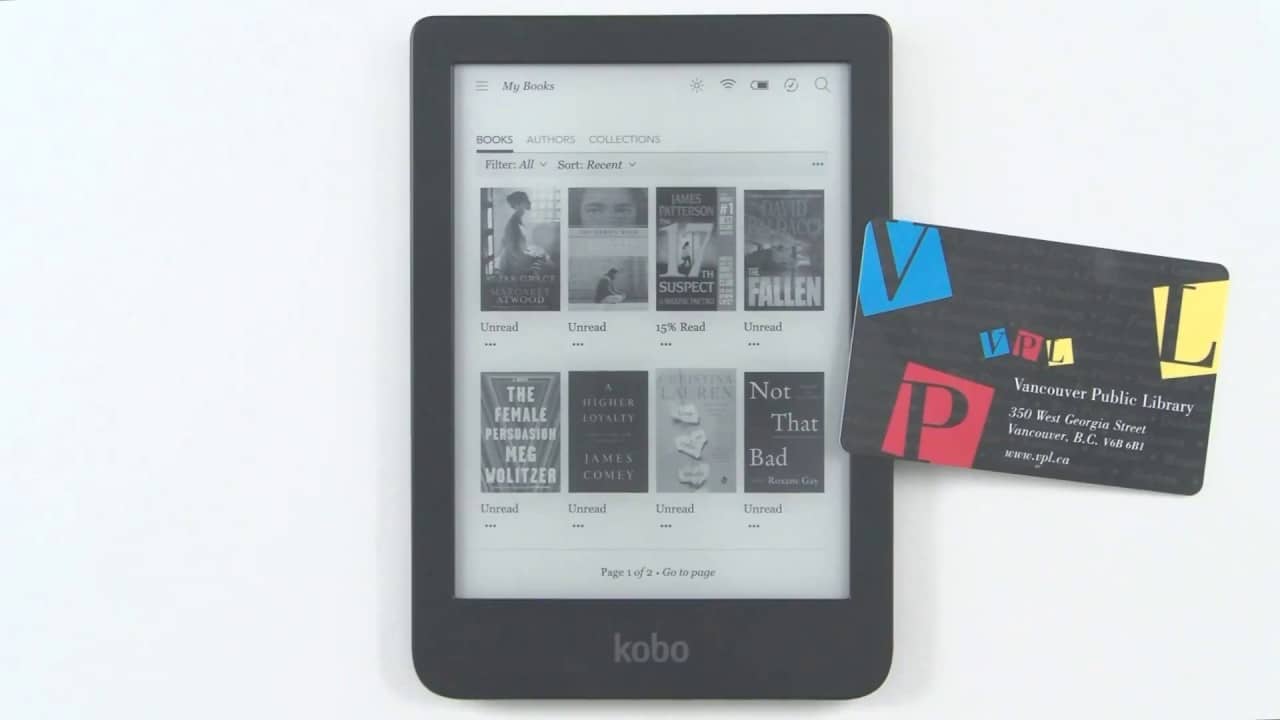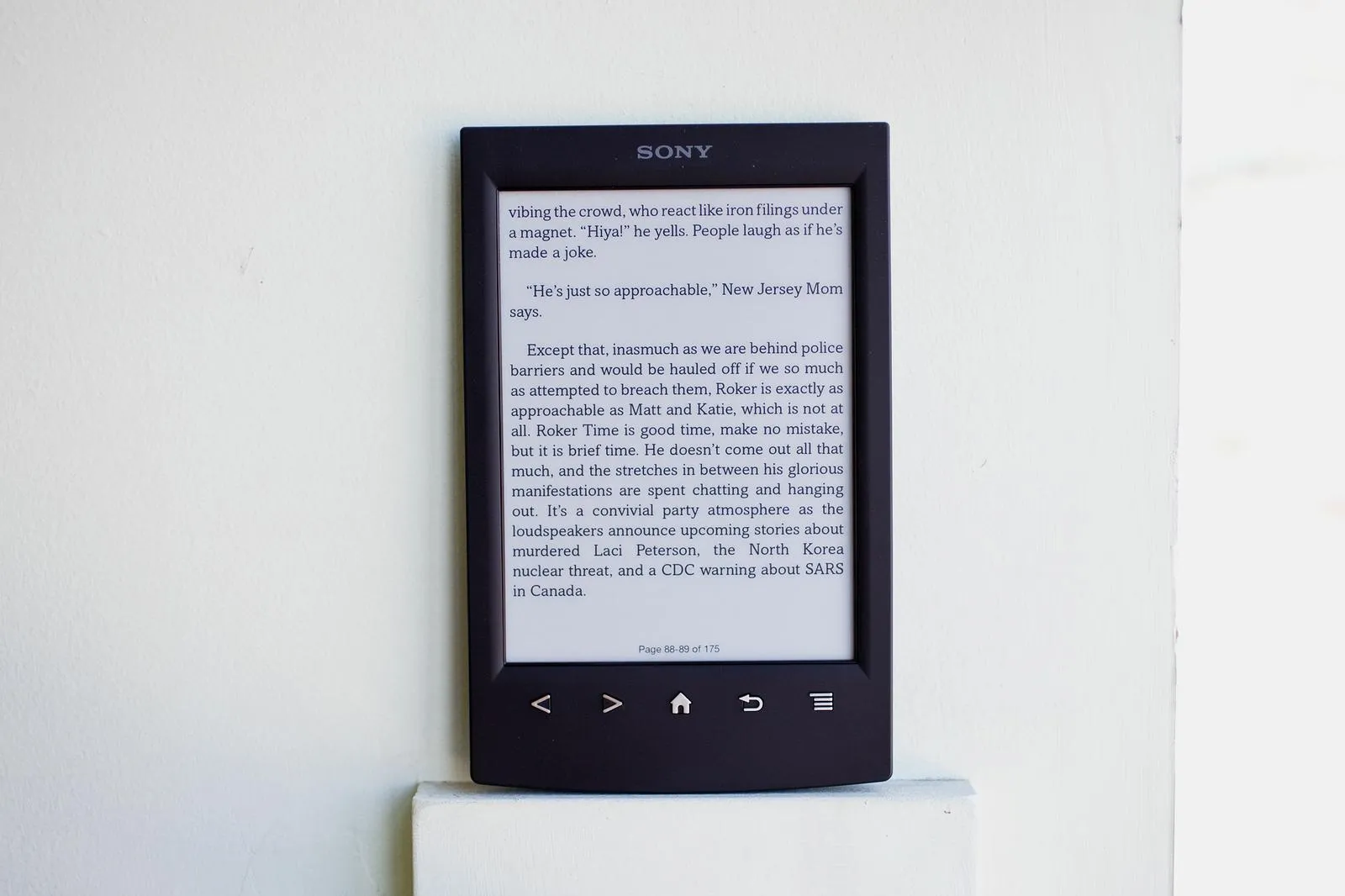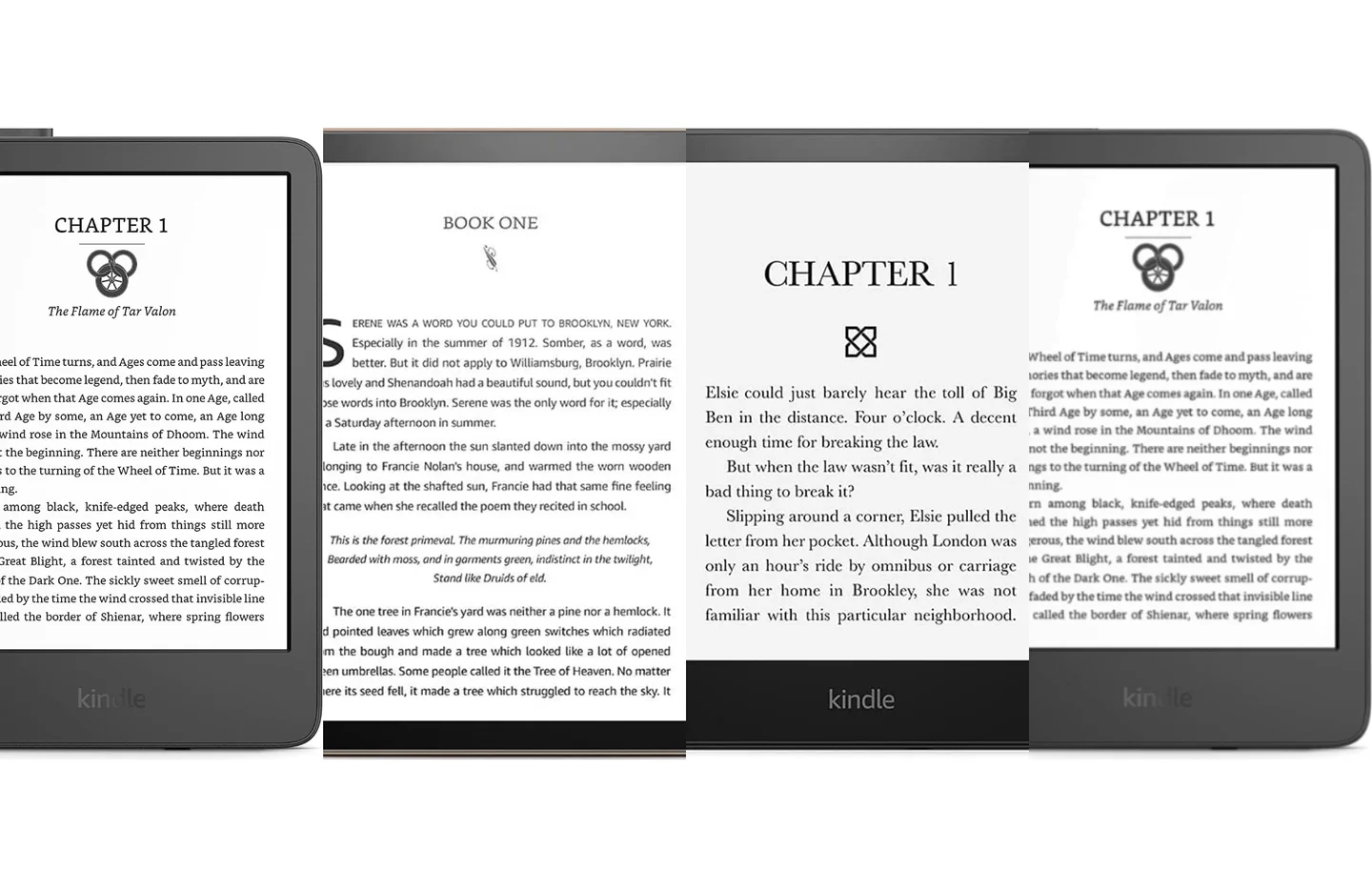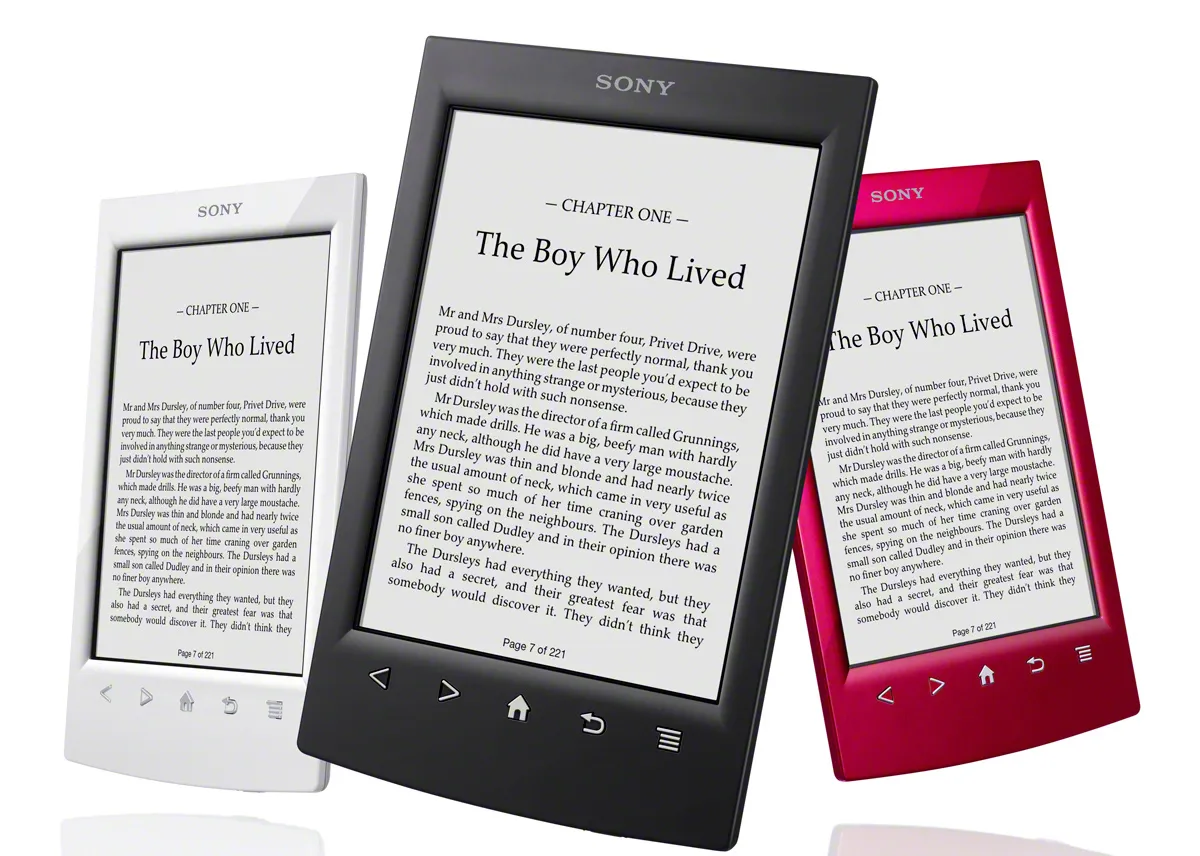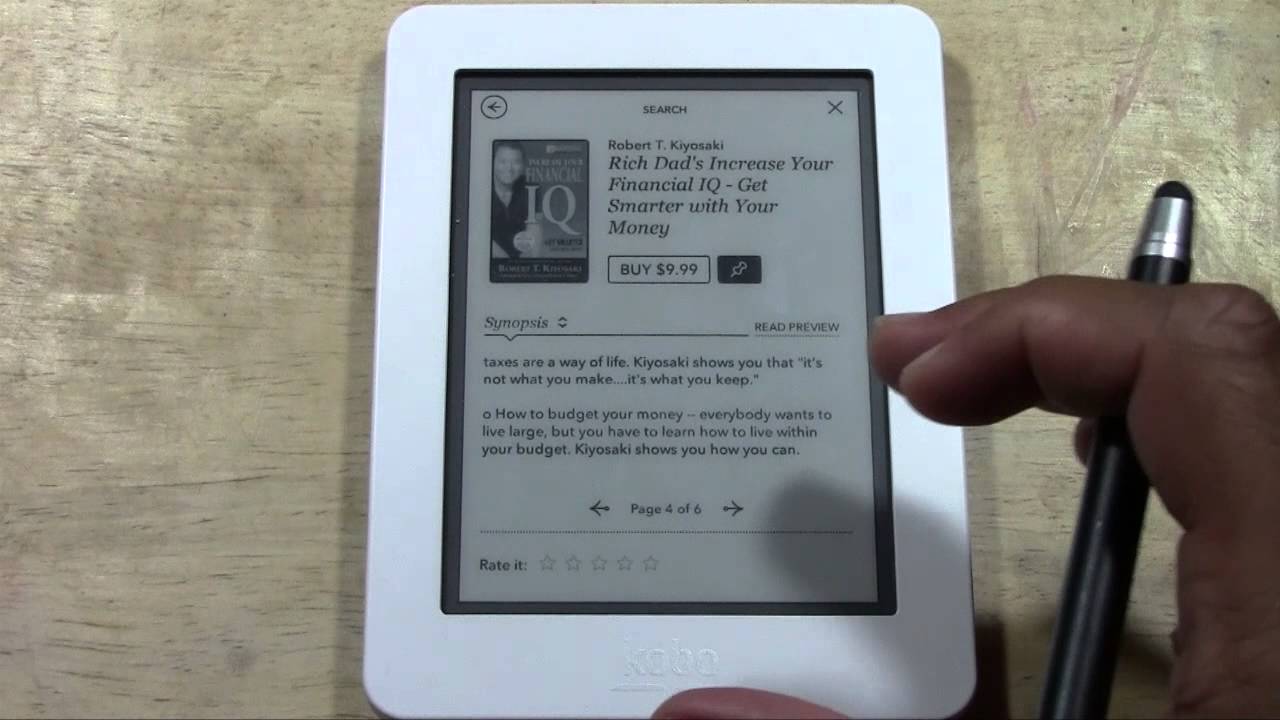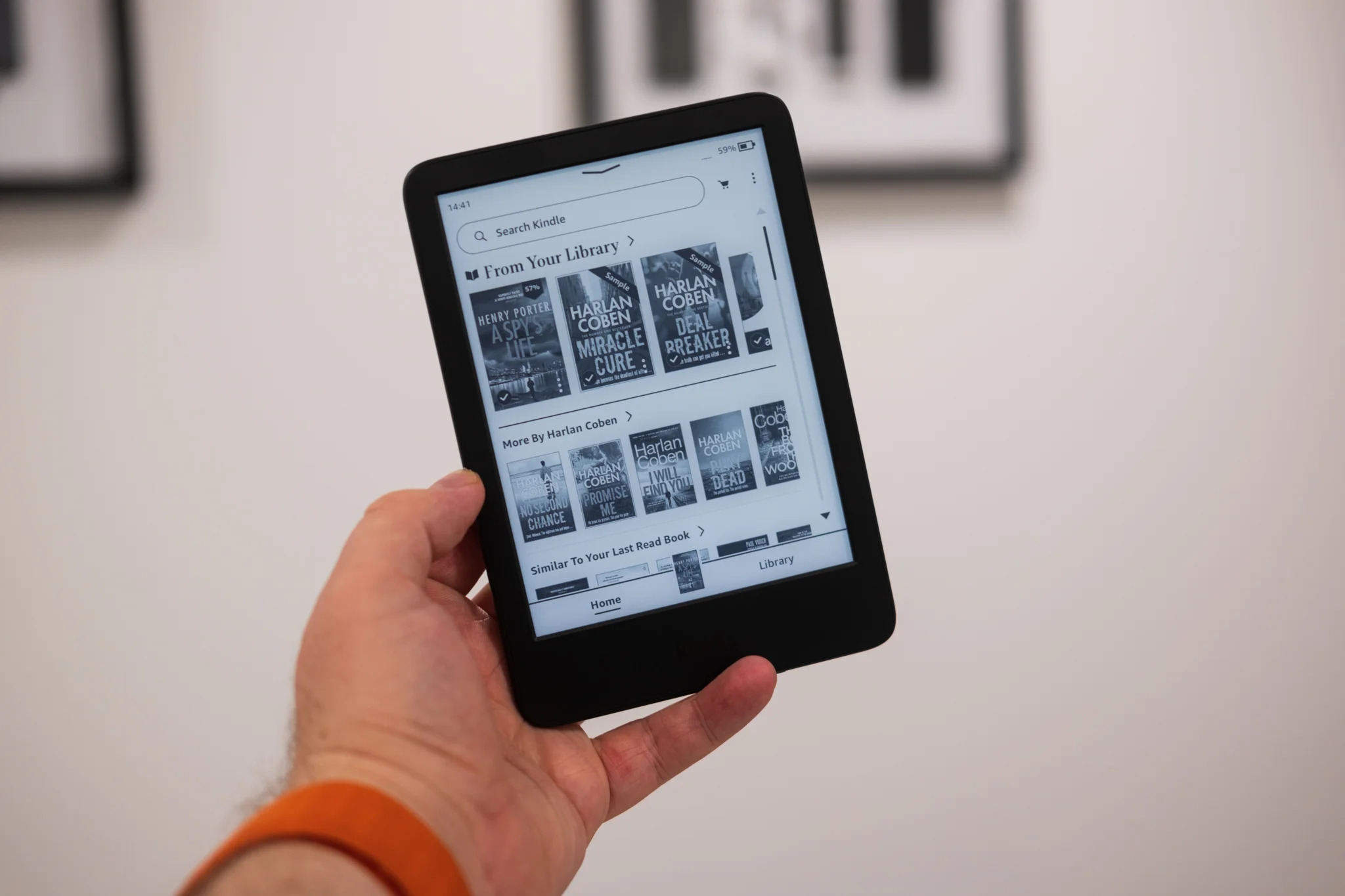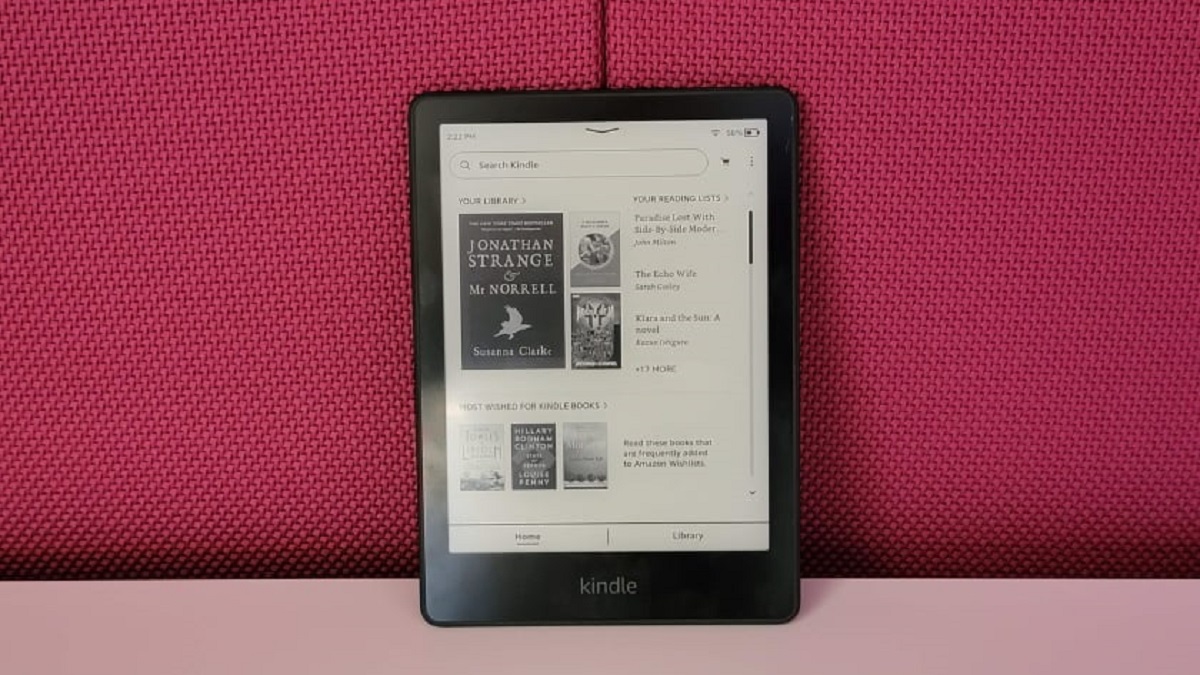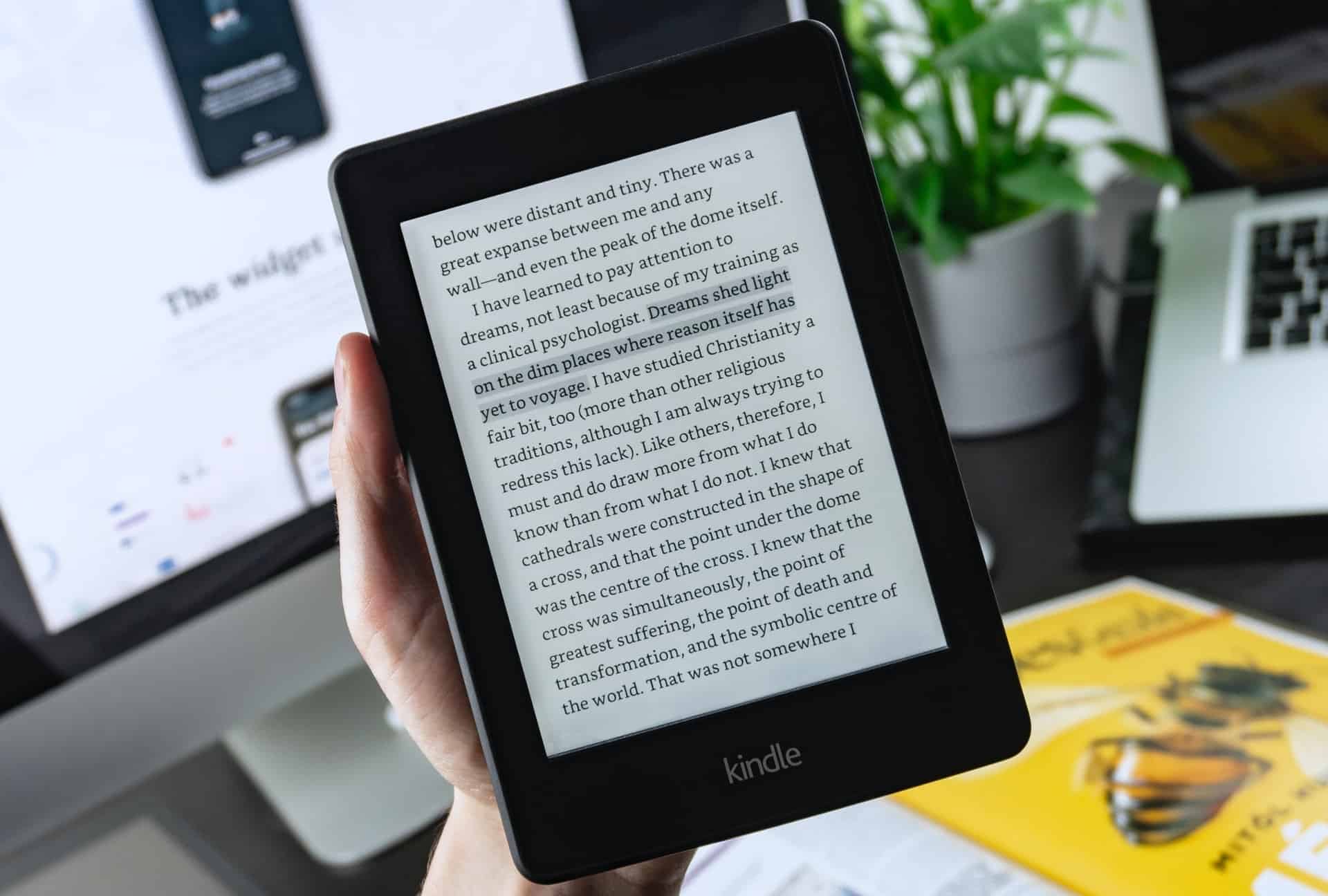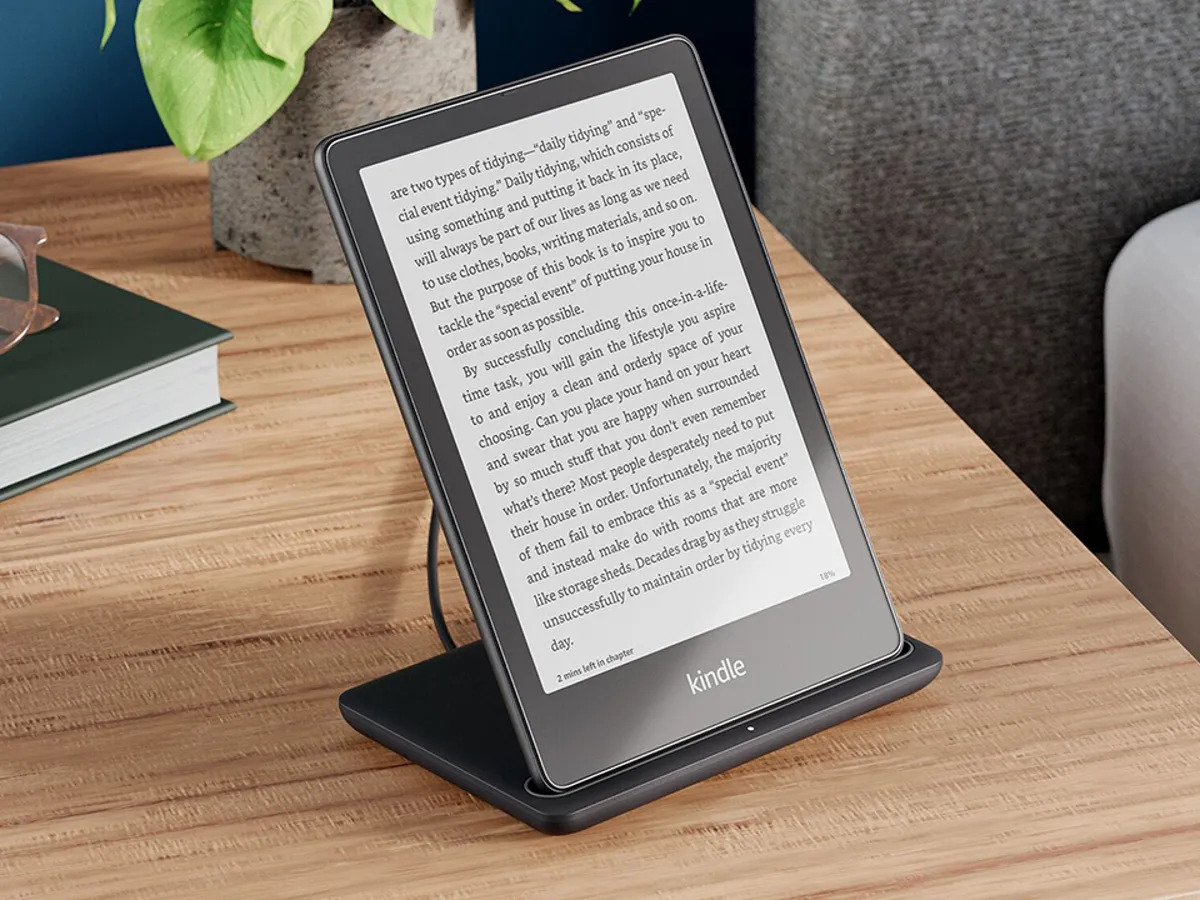Introduction
With the advancement of technology, traditional library visits are no longer the only option for bookworms looking to enjoy a good read. Thanks to the rise of ereaders, book lovers can now access a vast collection of books right at their fingertips. Ereaders have revolutionized the way we read, enabling us to carry an entire library wherever we go.
But what exactly is an ereader? In simple terms, an ereader is a portable electronic device designed specifically for reading digital books, also known as ebooks. These devices provide a convenient and comfortable reading experience with features such as adjustable font sizes, built-in dictionaries, and long battery life.
There are various types of ereaders available in the market, each with its own unique features and functionalities. From basic models that are solely dedicated to reading to more advanced ones that offer additional features like internet connectivity and audio playback, there is an ereader to cater to every reader’s needs.
One of the advantages of using an ereader is the ability to download library books directly onto the device. This feature allows users to access a vast collection of books offered by public libraries without the need to physically visit the library. It’s a convenient and cost-effective way to access a wide range of literature.
However, it’s important to note that not all ereaders are compatible with library systems, as some libraries use specific formats and DRM (Digital Rights Management) software. In this article, we will explore how to download library books on an ereader, as well as discuss popular ereaders that support this functionality.
So, if you’re a book enthusiast looking to expand your reading options, join us as we delve into the world of ereaders and discover how to enjoy your favorite library books on these portable devices.
What is an Ereader?
An ereader, short for electronic reader, is a portable device designed for reading digital books or ebooks. It provides a convenient and portable way to access and enjoy a vast collection of books without the need for physical copies. Ereaders come equipped with e-ink screens that mimic the appearance of ink on paper, creating a comfortable reading experience.
Unlike traditional tablets or smartphones, ereaders focus primarily on reading capabilities while offering features specifically tailored for book lovers. They have adjustable font sizes, allowing readers to customize the text to their preference. Additionally, ereaders often have built-in dictionaries, enabling users to look up definitions of unfamiliar words with a simple tap or swipe.
Ereaders utilize digital ink technology, which reduces eye strain and mimics the experience of reading a physical book. This technology also contributes to the impressive battery life of ereaders, as the digital ink display consumes very little power compared to traditional LCD screens found on other devices.
Most ereaders have onboard storage that can hold thousands of ebooks, making them ideal for travelers or anyone who enjoys having multiple reading options at their fingertips. Some models also have expandable storage options, allowing readers to further increase the device’s capacity by inserting a memory card.
In addition to ebooks, many ereaders are capable of displaying other file formats such as PDFs, making them versatile devices for reading documents, magazines, and newspapers. With the ability to highlight text, add personal notes, and bookmark pages, ereaders offer features that enhance the reading experience and mimic the convenience of reading a physical book.
Furthermore, ereaders often include features like adjustable lighting, enabling users to read in low-light or dark environments without straining their eyes. Some devices even offer waterproof capabilities, ensuring that readers can enjoy their favorite books without worrying about accidental water damage.
Overall, ereaders provide a convenient and portable solution for book lovers who want to carry an entire library in their pocket. With their specialized features and focus on the reading experience, these devices have become essential companions for those who appreciate the joy of reading.
Types of Ereaders
There are several types of ereaders available in the market, each with its own set of features and functionalities. Let’s explore some of the most popular types:
- E-Ink Ereaders: E-Ink ereaders, also known as dedicated ereaders, are designed primarily for reading and offer an e-ink display that closely resembles ink on paper. These devices provide a comfortable reading experience, long battery life, and minimal eye strain. They are lightweight and often have compact designs, making them ideal for avid readers who prioritize the reading experience above all else.
- Tablet Ereaders: Tablet ereaders, such as the Amazon Fire tablets or the Apple iPad, offer a wider range of features beyond just reading. They have LCD screens that offer vibrant colors and can handle multimedia content, making them suitable for activities like web browsing, streaming videos, and playing games. While they provide a versatile experience, tablet ereaders may not offer the same level of eye comfort as dedicated e-ink readers.
- Frontlit Ereaders: Frontlit ereaders, also known as backlit ereaders, come with built-in lighting that illuminates the screen from the front. This feature allows readers to enjoy their favorite books even in low-light or dark environments. Frontlit ereaders offer adjustable brightness levels, ensuring that users can find the perfect lighting for their reading preferences.
- Waterproof Ereaders: Waterproof ereaders are designed to withstand water exposure, making them suitable for reading near pools, on the beach, or in the bath. These devices come with a waterproof coating or built-in seals that protect them from accidental water damage. Waterproof ereaders are a great option for those who want to read worry-free in various environments.
- Connected Ereaders: Connected ereaders have built-in Wi-Fi or cellular connectivity, allowing users to download ebooks directly onto the device without the need for a computer. These devices provide seamless access to online bookstores and libraries, making it easy to browse, purchase, and download ebooks on the go.
Each type of ereader has its own advantages and considerations, so it’s important to choose the one that aligns with your reading preferences and needs. Whether you prioritize a pure reading experience, multimedia capabilities, or specific features like lighting or waterproofing, there’s an ereader out there to cater to your requirements.
How to Download Library Books on an Ereader
Downloading library books on an ereader requires a few steps and may vary depending on the device and the library system. Here is a general guide to help you get started:
- Choose a Compatible Ereader: Ensure that your ereader is compatible with downloading library books. Some popular ereaders like Amazon Kindle, Kobo, and Barnes & Noble Nook have built-in features that allow seamless integration with library systems. Check the manufacturer’s website or consult the user manual to confirm compatibility.
- Create an Account: Most library systems require users to have a library card and an account. If you don’t have a library card, visit your local library to sign up for one. Once you have a library card, follow the library’s instructions to create an account on their website.
- Download Library App: Some libraries offer dedicated apps for ebook lending. Check if your library has an app available for your ereader. Install the app on your device and log in using your library account credentials.
- Browse and Borrow: Use the library app or visit the library’s website to browse their collection of ebooks. Look for the “Available” or “Borrow” button next to the books you want to read. Click on it to borrow the book.
- Authorize your Ereader: To transfer the borrowed ebook to your ereader, you may need to authorize your device with your library account. This process may involve using Adobe Digital Editions or similar software to manage DRM-protected ebooks.
- Transfer to Ereader: Connect your ereader to your computer using a USB cable. Open the library app or software on your computer and follow the instructions to transfer the borrowed ebook to your device. Once the transfer is complete, safely disconnect your ereader from your computer.
- Enjoy Reading: Your borrowed library book should now be available on your ereader’s library or bookshelf. Open your ereader’s library section, locate the book, and select it to start reading. Enjoy your library book on your ereader at your leisure.
It’s important to note that the steps outlined above serve as a general guide. The actual process may vary depending on the library system and the ereader you are using. If you encounter any difficulties or have specific questions, consult the library’s help resources or contact their support for assistance.
By following these steps, you can access a wealth of books from your local library directly on your ereader, providing you with endless reading options without having to leave the comfort of your home.
Compatibility with Library Systems
When it comes to downloading library books on an ereader, compatibility with the library’s system is crucial. Not all ereaders are compatible with every library, as different libraries may have different digital formats and DRM (Digital Rights Management) restrictions. Here are some key factors to consider regarding compatibility:
Supported Formats: Ereaders support different file formats, such as EPUB, PDF, MOBI, or AZW. It’s important to ensure that your ereader supports the formats offered by your library. EPUB is the most common format used by public libraries, so most ereaders are compatible with it. However, if your library primarily offers books in a different format, make sure your ereader can handle it.
DRM Compatibility: DRM is a technology used to protect copyrighted content from unauthorized distribution. Some library ebooks are protected by DRM, which requires the use of specific software or authorization to access and read the books. Check if your ereader is compatible with the DRM used by your library. Adobe Digital Editions is a commonly used software for managing DRM-protected ebooks.
Library App or Software: Many libraries offer their own dedicated apps or software for downloading and reading ebooks. These apps are designed to work seamlessly with specific ereaders and may offer additional features such as book recommendations or syncing progress across devices. Ensure that your ereader is compatible with the library’s app or software if you choose to utilize it for borrowing and managing library books.
Wi-Fi or USB Transfer: Depending on the library system and ereader model, you may be able to download library books directly onto your device using Wi-Fi or transfer them from your computer using a USB cable. Confirm the method supported by your ereader and the library system to ensure seamless transfer of borrowed ebooks.
Regional Restrictions: Keep in mind that access to library ebooks may be restricted based on your geographical location. Some ebooks may only be available to residents of a specific region or country due to licensing agreements. Check with your library regarding any regional restrictions that may apply.
To ensure compatibility, it’s always a good idea to research and check the specifications of your ereader model, consult the manufacturer’s website, or contact customer support for any specific compatibility questions. Additionally, reach out to your local library’s support or browse their website for information on compatible ereaders and the formats they support.
By ensuring compatibility between your ereader and the library system, you can seamlessly enjoy a wide range of digital books from your local library, expanding your reading options and enhancing your reading experience.
Popular Ereaders for Library Books
When it comes to choosing an ereader for accessing library books, several models stand out for their compatibility, features, and performance. Let’s explore some of the popular ereaders frequently used by readers for borrowing and enjoying library books:
- Amazon Kindle: The Amazon Kindle series is widely recognized for its extensive library of ebooks and seamless integration with Amazon’s vast ebook store. Kindle devices support the popular EPUB format used by many public libraries, as well as Amazon’s proprietary AZW format. With features like adjustable font sizes, built-in dictionaries, and long battery life, Kindle ereaders provide a comfortable reading experience.
- Kobo Ereaders: Kobo is a popular brand known for its range of ereaders that offer compatibility with various libraries and ebook formats. Kobo ereaders support EPUB and PDF formats, making them compatible with most library systems. They also provide features like adjustable lighting, customizable fonts, and integration with Kobo’s own ebook store, allowing users to explore a wide selection of titles.
- Barnes & Noble Nook: The Barnes & Noble Nook series is another favorite among readers. Nook ereaders support EPUB and PDF formats, providing compatibility with library systems. These devices offer built-in lighting, adjustable font sizes, and access to the Barnes & Noble ebook store. Nook users can easily borrow and read library books through the OverDrive app.
- Onyx Boox: Onyx Boox devices are known for their versatility and customization options. These ereaders support various ebook formats, including EPUB and PDF, making them compatible with library systems. Onyx Boox devices also offer features like frontlighting, adjustable font sizes, and notetaking capabilities, providing a seamless reading experience.
- PocketBook Ereaders: PocketBook is a popular brand that offers a range of ereaders compatible with library systems. These devices support EPUB and PDF formats, and some models come with features like adjustable frontlighting, touchscreens, and long battery life. PocketBook ereaders allow users to easily borrow library books and access online libraries.
These are just a few examples of popular ereaders that provide great compatibility with library systems. It’s important to research and consider the specific features, formats supported, and user reviews when choosing an ereader for borrowing and enjoying library books. Additionally, make sure to check the compatibility of the ereader with your local library’s system before making a purchase.
Remember, the availability and compatibility of ebooks may vary depending on the library system and your geographical location. Reach out to your local library for more information on supported ereaders and the formats they offer to ensure a seamless experience when borrowing and reading library books on your chosen ereader.
Recommendations for Ereaders that Support Library Books
If you’re looking for an ereader that has excellent compatibility with library books, here are a few recommendations to consider:
- Amazon Kindle Paperwhite: The Kindle Paperwhite is a popular choice among readers for its easy integration with Amazon’s vast ebook store and compatibility with library systems. With its e-ink display, adjustable front lighting, long battery life, and support for the EPUB format, the Kindle Paperwhite provides a seamless reading experience for library book enthusiasts.
- Kobo Clara HD: The Kobo Clara HD is a compact and lightweight ereader that offers a high-resolution e-ink display and seamless compatibility with library books in EPUB format. It has adjustable lighting, customizable fonts, and a long-lasting battery. Kobo Clara HD also provides access to the Kobo ebook store, allowing users to discover and explore a wide range of titles.
- Barnes & Noble Nook GlowLight Plus: The Nook GlowLight Plus from Barnes & Noble is a waterproof ereader that supports library books in both EPUB and PDF formats. It features a front-lit display, adjustable font sizes, and a long-lasting battery. With the Nook GlowLight Plus, users can easily borrow and read library books through the built-in OverDrive app.
- Onyx Boox Nova 3 Color: The Onyx Boox Nova 3 Color is an innovative ereader that offers a color e-ink display, making it ideal for reading illustrated and graphical content. It supports various ebook formats, including EPUB and PDF, and provides features like adjustable front lighting, notetaking capabilities, and Wi-Fi connectivity for easy access to library books.
- PocketBook Touch HD 3: The PocketBook Touch HD 3 is a versatile ereader that supports library books in EPUB format and offers a user-friendly interface. It features a sharp e-ink display, adjustable front lighting, and a range of customizable reading settings. The PocketBook Touch HD 3 also comes with a long battery life and access to online libraries for easy borrowing of ebooks.
These recommendations are based on the compatibility, features, and positive user reviews of the ereaders. Ultimately, the choice of an ereader depends on your personal preferences and reading habits. Consider factors such as display quality, lighting options, battery life, and the convenience of accessing library books when making your decision.
Before purchasing an ereader, always check the compatibility with your local library’s system, as specific libraries may have different requirements or supported formats for borrowing ebooks. It’s also a good idea to read customer reviews, explore additional features, and compare prices to find the best ereader that suits your needs.
With the right ereader in hand, you can enjoy a vast selection of library books right at your fingertips, expanding your reading options and immersing yourself in a world of captivating stories.
Conclusion
Ereaders have transformed the way we read and access books, providing a convenient and portable solution for enjoying a vast collection of literature. With the ability to download library books directly onto these devices, readers can now access a wealth of literary content without the need for physical copies or visits to the library.
In this article, we discussed the concept of ereaders and their role in modern reading culture. We explored the different types of ereaders available, ranging from dedicated devices focused on reading to tablets with broader functionality. We also provided a step-by-step guide on how to download library books onto an ereader, emphasizing the importance of compatibility with library systems and discussing popular ereaders that support this functionality.
When it comes to ereaders that support library books, several models stand out for their compatibility, features, and performance. Recommendations include the Amazon Kindle Paperwhite, Kobo Clara HD, Barnes & Noble Nook GlowLight Plus, Onyx Boox Nova 3 Color, and PocketBook Touch HD 3. However, it’s essential to research and consider factors like supported formats, DRM compatibility, regional restrictions, and library app compatibility before making a purchase.
By embracing an ereader that supports library books, readers can expand their literary horizons, immerse themselves in captivating stories, and enjoy the convenience of carrying an entire library in their hands. Whether it’s accessing classics, exploring new releases, or diving into niche genres, ereaders offer a world of reading possibilities.
Remember to check the compatibility of your chosen ereader with your local library’s system, create an account, and follow the steps provided by your library to borrow and enjoy ebooks. Whether you prefer the convenience of Amazon’s extensive library, the versatile compatibility of Kobo and Barnes & Noble devices, or the innovative features of Onyx Boox and PocketBook, there is an ereader out there to suit your reading habits and preferences.
So, embark on a digital reading adventure, discover hidden literary gems, and enjoy the pleasurable experience of accessing library books on your ereader. Get lost in the pages of your favorite books, explore new authors, and embrace the limitless possibilities that ereaders offer.







